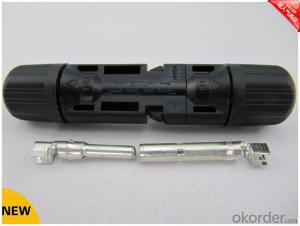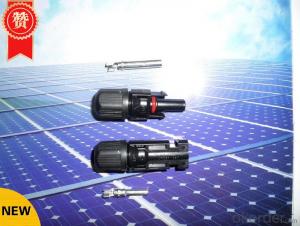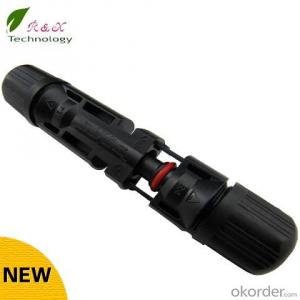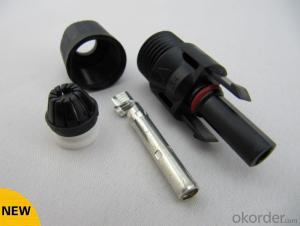MC4 Female/Male can contact 2.5/4/6mm2 Cable
- Loading Port:
- Guangzhou
- Payment Terms:
- TT OR LC
- Min Order Qty:
- 100 set
- Supply Capability:
- 100000 set/month
OKorder Service Pledge
OKorder Financial Service
You Might Also Like

Brief introductions of product:
Connector R4 System for photovoltaic adopts contact and insertion of reed with inner-knob type.It is used with male and famale points.pv junction box and cables made of elastomeric material and makes contact and isertion more certified by IEC61215 and TUV 2PFG1161.
Mainly parameters of product:
Rated voltage 1000V DC
Rated current 30A
Test volaage 6KV(50HZ,1min.)
Ambient temperaure range -40°C...+90°C
Upper limiting temperature 105°C
Degree of protection,mated IP67
unmated IP2X
Contact resistance of plug connectors 0.5m?
Safety class II
Contact system R4 Multilam
Type of termination Crimping
Contact material
Copper,tin plated
Locking system Snap-in(R4)
Cable type PV-F 1169 1*4mm2
1*6mm2
Design paper of product:

Way of product installation:

Quality inspection process:
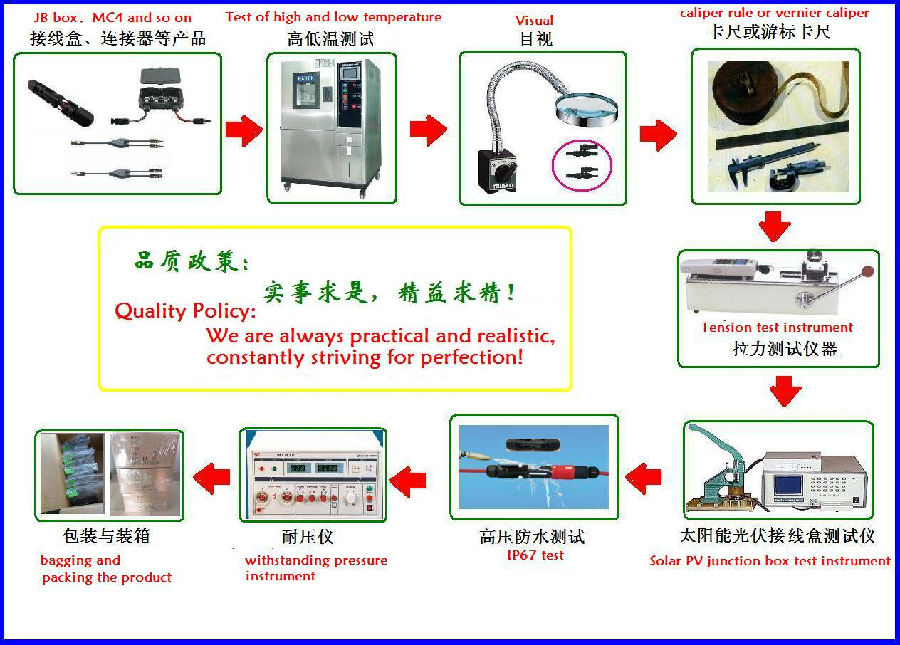
Application pictures of product:
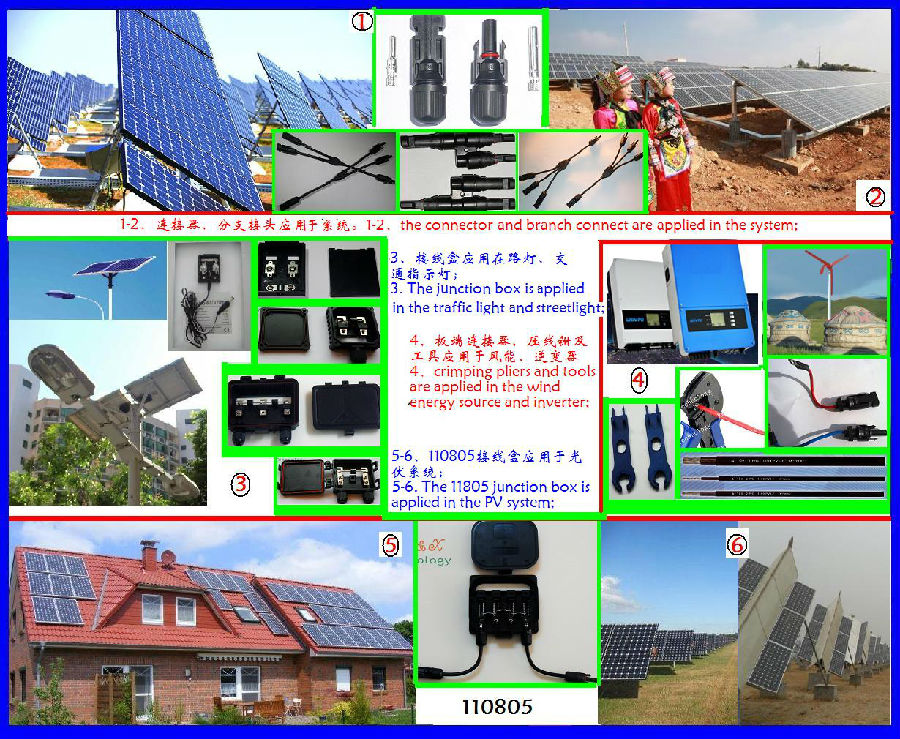
Machine equipment and production workshop:

Pictures of discussing in the exhibition:

True application picture of the project:

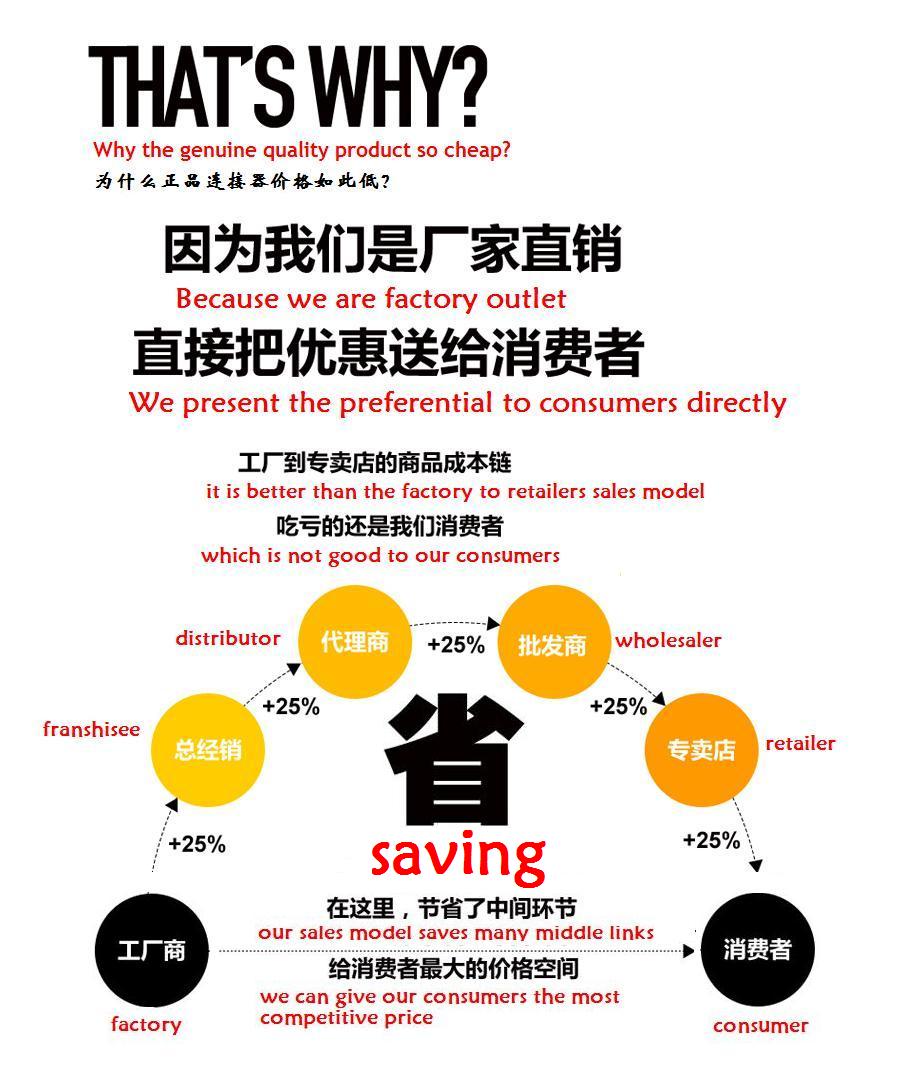
Multi-Contact Multi-Contact Multi-Contact Multi-Contact Multi-Contact Multi-Contact
- Q:How often do solar panels need to be cleaned?
- Solar panels typically need to be cleaned at least once or twice a year to maintain their efficiency. However, the frequency of cleaning can vary depending on various factors such as the location, climate, and surrounding environment.
- Q:Can solar energy systems be used for charging electric vehicles?
- Yes, solar energy systems can be used for charging electric vehicles. Solar panels can convert sunlight into electricity, which can then be used to charge the batteries of electric vehicles. This is a sustainable and environmentally friendly way to power electric vehicles, reducing reliance on fossil fuels and lowering carbon emissions.
- Q:Can solar panels be installed on vertical surfaces?
- Indeed, it is possible to install solar panels on vertical surfaces. While the most commonly used and efficient method involves mounting solar panels on rooftops or tilted surfaces that face the sun, there are also specialized solar panels specifically designed for vertical installations. These solar panels, known as vertical or facade solar panels, are typically lightweight and frameless in design, making them easy to mount on vertical surfaces such as walls or building facades. Vertical solar panels are an excellent solution for buildings with limited roof space or for those who wish to maximize energy production on all available surfaces. However, it is important to note that vertical installations may not be as efficient as traditional rooftop installations due to the reduced exposure to sunlight. The performance of vertical solar panels can also be affected by the angle and orientation of the surface, as well as potential shading from nearby structures or trees. Nonetheless, advancements in solar technology and design have made vertical installations more practical and efficient than ever before. By carefully considering factors such as surface tilt, orientation, and shading, solar panels can be successfully installed on vertical surfaces, thus harnessing clean and renewable energy.
- Q:Can solar energy systems be used for desalination of water?
- Yes, solar energy systems can be used for desalination of water. Solar-powered desalination systems use solar energy to power the desalination process, typically through the use of photovoltaic (PV) panels or solar thermal collectors. These systems can convert seawater or brackish water into fresh water by harnessing the sun's energy to heat, evaporate, and condense the water, leaving behind the salt and other impurities. Solar desalination offers a sustainable and environmentally friendly solution to address water scarcity in areas with abundant sunlight.
- Q:How do solar energy systems impact national energy policy?
- Solar energy systems have a significant impact on national energy policy by promoting a shift towards renewable energy sources and reducing dependence on fossil fuels. They encourage the adoption of sustainable practices and help countries meet their carbon emission reduction targets. Additionally, solar energy systems foster energy independence, create new job opportunities, and enhance energy security, ultimately shaping and influencing national energy policies.
- Q:I usually have to use about 10 degrees, more in the summer! Winter sunshine time 10 hours! Who knows how much a set price, what brand?
- Sold to the power supply bureau 0.45 yuan once, the state subsidy fee of $0.42, a year issued 3000 kwh.
- Q:Can a solar energy system be used for heating and cooling?
- Yes, a solar energy system can be used for heating and cooling. Solar thermal systems can be used to provide heat by capturing and utilizing the sun's heat energy. These systems typically consist of solar collectors that absorb the sun's rays to heat a fluid, which is then used to heat water or air. The heated water can be used for various purposes, such as space heating, domestic hot water, or even for industrial processes. Additionally, solar energy can also be used for cooling through the use of solar-powered air conditioning systems. These systems utilize solar energy to power absorption chillers or heat-driven chillers, which cool the air by absorbing heat from it. This process is typically more energy-efficient than traditional air conditioning systems that rely on electricity. Furthermore, solar energy can also be harnessed for passive cooling. Passive solar cooling techniques involve designing buildings to maximize natural ventilation and shading, reducing the need for mechanical cooling systems. This can be achieved through techniques such as strategic building orientation, proper insulation, and the use of shading devices like awnings or overhangs. Overall, solar energy systems can indeed be used for both heating and cooling, offering sustainable and cost-effective solutions for meeting our thermal comfort needs.
- Q:What is solar energy?
- Solar energy is the renewable form of energy derived from the sun's radiation, which is harnessed using various technologies such as solar panels or photovoltaic cells to convert sunlight into electricity or heat.
- Q:How do solar energy systems impact social equity?
- Solar energy systems have the potential to significantly impact social equity in various ways. Firstly, they provide access to clean and affordable energy for communities that may not have reliable access to electricity, reducing energy poverty and improving quality of life. Additionally, solar energy can create job opportunities, particularly in communities that have been historically marginalized or economically disadvantaged. This can contribute to reducing income inequality and empowering local economies. Furthermore, solar energy systems allow for decentralized power generation, giving communities more control over their energy sources and reducing dependence on centralized utilities. Overall, solar energy systems have the potential to promote social equity by improving energy access, fostering economic empowerment, and increasing community resilience.
- Q:Can solar energy systems be used for powering shopping malls or retail centers?
- Yes, solar energy systems can absolutely be used for powering shopping malls or retail centers. In fact, many shopping malls and retail centers around the world are already utilizing solar energy systems to meet their energy needs. Solar panels can be installed on the rooftops of these buildings, or in parking lots, to capture sunlight and convert it into electricity. Solar energy systems have numerous advantages for shopping malls and retail centers. Firstly, they offer a reliable and consistent source of clean and renewable energy. This helps reduce dependence on fossil fuels, lower carbon emissions, and contribute to a more sustainable future. Additionally, solar energy systems can significantly reduce energy costs for these establishments, as they generate electricity for free once the initial installation costs are covered. Moreover, solar panels can be integrated into the architectural design of shopping malls and retail centers, providing a unique and visually appealing feature. This can enhance the overall aesthetic appeal of the buildings and attract more customers. Additionally, solar panels can provide shade in parking lots, protecting vehicles from direct sunlight and reducing the need for air conditioning. However, it's important to note that the feasibility of installing solar energy systems in shopping malls or retail centers depends on various factors such as available space, local regulations, and financial considerations. Appropriate planning and design are crucial to ensure efficient utilization of solar energy and maximize the benefits. Overall, solar energy systems are a viable and sustainable solution for powering shopping malls and retail centers. Their adoption not only helps reduce environmental impact but also provides long-term cost savings and promotes a positive brand image for businesses.
1. Manufacturer Overview |
|
|---|---|
| Location | |
| Year Established | |
| Annual Output Value | |
| Main Markets | |
| Company Certifications | |
2. Manufacturer Certificates |
|
|---|---|
| a) Certification Name | |
| Range | |
| Reference | |
| Validity Period | |
3. Manufacturer Capability |
|
|---|---|
| a)Trade Capacity | |
| Nearest Port | |
| Export Percentage | |
| No.of Employees in Trade Department | |
| Language Spoken: | |
| b)Factory Information | |
| Factory Size: | |
| No. of Production Lines | |
| Contract Manufacturing | |
| Product Price Range | |
Send your message to us
MC4 Female/Male can contact 2.5/4/6mm2 Cable
- Loading Port:
- Guangzhou
- Payment Terms:
- TT OR LC
- Min Order Qty:
- 100 set
- Supply Capability:
- 100000 set/month
OKorder Service Pledge
OKorder Financial Service
Similar products
New products
Hot products
Related keywords
